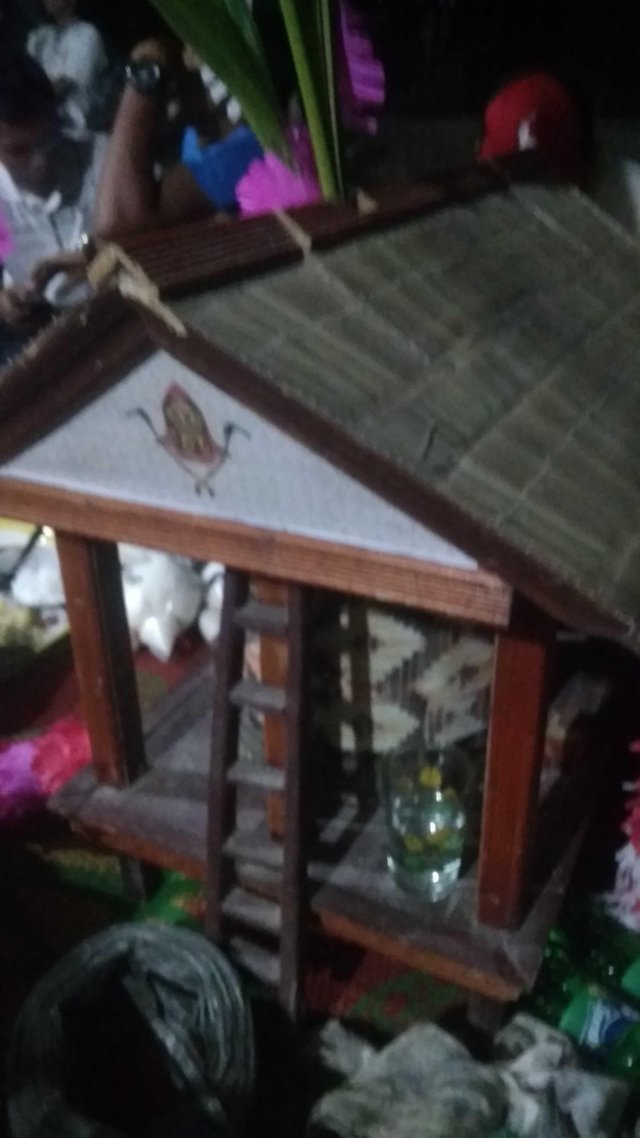RICE STORAGE IN 1930-AN

RICE STORAGE IN 1930-AN
The title of this paper should be "rice storage in the 1930s". Reading the past history of society in "preserving agricultural produce" is worth imitating.
There is a good ancestor message, which I got from a friend. When we harvest the paddy, save the harvest first until 1 season. After we harvest again (the 2nd harvest is done), the first harvest is first released.
Why? because if we sell the first harvest and hope in the 2nd harvest. Yes if the harvest is good. If crop failure? finally there is a story that started many happen: rice farmers buy rice !!
Indeed, there are good ancestor messages for the survival of the agricultural world. This is what we should imitate. And sometimes, the ancestor's messages to save the seeds with malainya are still very relevant to the present situation.
Seeds stored with their stalks, have a long shelf life. Let us compare, the seeds are threshed with the seeds that are in the same shelf and then we save. So it can be ascertained, the existing seed malainya will be much more durable and high berkefambahnya power.
This writing that I take reminds us of nostagia to the farmers who live in harmony with their environment.
Rice can not be separated from the Javanese, the Indonesian nation, and most of the Asian nation. Rice is a staple food for residents in these areas.
The management of rice crops in Java is already regarded as a mere luncheon. But people are not aware that over the development of the era of crop management is undergoing various changes.
Java, once known as a rice producer with a variety of local varieties because of the system of planting monoluktur rice resulting in local varieties lost.
Another nation who then ngopeni. There are thousands of varieties of rice crops in Java in the past. Now we only know a few. It is due to a new awareness (which is too late) to the breeding of local plant species.
Rice harvest is a happy time for farmers. In the past, rice harvesting of rice stalks was cut one by one with ani-ani. Now the rice harvest is done with sickle blast. Faster. More efficient. It is.
But we may forget or do not understand that the harvesting of rice one by one is actually a form of appreciation for the work done by the farmers.
The form of affection and love in the fruits of the blessed masterpiece of the Creator. For without the blessing of the Creator fertility and the harvest will not happen. It is also a form of awareness of a process. All need time. There will be a time.
Today's rice harvest is generally directly threshed grains in the middle of the field by digepyokkan / dibantingkan on tools made of board composition.
There is also a dierek (threshed with a machine and cylindrical spikes). After that the grain that fall out and have been accommodated in plastic sheets or tarps directly carried to the open ground or roadside for drying.
It is so different from the old days.
In the past rice that has been cut from the stalk is generally then tied into one. The magnitude of the bonding diameter is generally a handful of adult hands. These rice bundles are then carried and dried on braids or mats.
World of Photography
>Visit the website<
You have earned 6.50 XP for sharing your photo!
Daily photos: 1/2
Daily comments: 0/5
Multiplier: 1.30
Block time: 2018-05-07T06:43:33
Total XP: 23.10/100.00
Total Photos: 4
Total comments: 0
Total contest wins: 0
Follow: @photocontests
Join the Discord channel: click!
Play and win SBD: @fairlotto
Daily Steem Statistics: @dailysteemreport
Learn how to program Steem-Python applications: @steempytutorials
Developed and sponsored by: @juliank
Chic article. I learned a lot of interesting and cognitive. I'm screwed up with you, I'll be glad to reciprocal subscription))